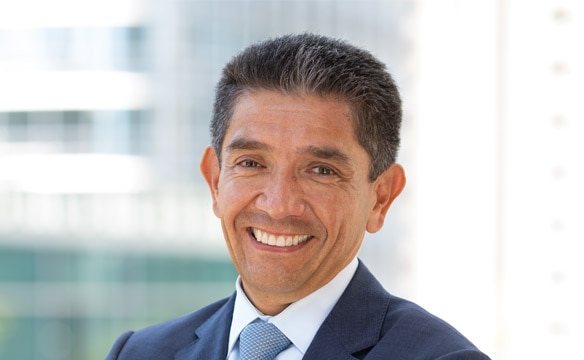Self-control bias
- Read transcript
Self-control bias—2-minute video
Is the self-control bias affecting your clients? Help them find out by sharing this short, client-approved video, which provides actionable insights and guidance on how the self-control bias can potentially influence our investment decisions. Then consider exploring the behavioral finance program for advisors linked near the bottom of the page for follow-up tools.
Self-control bias in perspective
How giving in to instant gratification may impede long-term financial success.
Key Takeaways:
- Self-control bias is the tendency to make impulsive decisions based on short-term gratification, without considering long-term goals or consequences.
- Lack of self-control is human nature, as everyone enjoys immediate rewards. This is particularly evident in younger generations and the instant feedback they expect from social media.
- Self-control bias can lead to overspending, debt accumulation, and impulsive investment decisions that may increase the risks of missing long-term investment objectives.
- A systematic approach to investing and a disciplined spending process can potentially help mitigate this bias.
- For example, setting up expense budgets might help control the urge to splurge and define scenarios for adjusting investment portfolios that may better keep investors on track.
What is self-control bias?
Self-control bias is the tendency to make impulsive decisions based on short-term gratification, without considering long-term goals or consequences. Picture staying up late on a work night and watching “just one more” episode of a show instead of considering how you’ll feel when the alarm goes off in the morning.
Self-control bias is an emotional bias, powerful because it feeds off the human desire for reward: after earning a bonus, for instance, an individual might feel the urge to treat themselves with a luxury vacation or a big-ticket item, such as a new car. By contrast, investing that money in a retirement fund feels abstract—perhaps even boring.
How common is self-control bias? Research shows that when people are given the option to save or spend, they mostly spend. As of 2022, almost half (46%) of American households had zero savings in tax-advantaged retirement accounts, according to the Federal Reserve.1 Higher income households save more, but generally not enough. Even for households nearing retirement (age 60-65), the median retirement-account savings was just $10,000. For most households, personal wealth is usually tied up in illiquid assets like a home—a form of enforced savings (by making mortgage payments).
At a glance: Self-control bias
Self-control bias is an emotional bias. It is the client's tendency to deviate from their own discipline and make decisions based on short-term gratification.
When it comes to investing, self-control bias can lead to some risky behavior, such as chasing hot stocks, sectors, or other investments. Unfortunately, these types of investments are often subject to boom-bust cycles.
When chasing performance backfires:
GameStop
Fell nearly 87% from its peak in less than a month in early 2021.1Dogecoin
Fell nearly 70% from its peak in just over two months in 2021.2Peloton
Fell nearly 78% from its peak throughout 2021.3The problem:
Rather than chasing returns and jumping in and out of the market, investors may be far better off investing in a diverse portfolio over the long term.Average equity fund investor experienced returns compared to S&P 500 returns:
This difference is due to the average equity investor selling during downturns, causing them to miss out on the rebounds.
How advisors can help: Teach clients about the potential risks of market timing, focusing instead of long-term goals.
1 https://finance.yahoo.com/quote/GME/history/?period1=1606780800&period2=1617062400
2 https://finance.yahoo.com/quote/DOGE-USD/history/?period1=1617235200&period2=1627689600
3 https://finance.yahoo.com/quote/PTON/history/?period1=1583020800&period2=1640908800
4 Dalbar, "DALBAR Quantitative Analysis of Investor Behavior;' 2024. https://www.dalbar.com/Portals/dalbar/Cache/News/PressReleases/QAIB2024_PR.pdf
Why does it matter?
Self-control bias may lead us to focus on short-term rewards and may therefore fuel overspending, debt accumulation, and impulsive decision making—ever wonder why there are so many wedding chapels in Las Vegas?
People without financial self-discipline might have good jobs but may often feel “broke” because they spend their money instead of prioritizing savings and investing for the long run.
Lack of financial self-control often leads to indebtedness as the urge to spend can outpace income. Unsustainable debt can take many forms—borrowing against a home, for example, or running up credit card debt. In the first half of 2024, Experian reported that the average American credit card balance was $6,699—up $1,000 from 2022.
What can you do about it?
When clients demonstrate self-control bias, raising their awareness of the issue is an important first step. It’s important to frame the situation as normal human behavior—something to which we are all susceptible—rather than as a personality flaw. Often simply being cognizant of the desire for immediate satisfaction can help clients resist careless spending and investing behavior.
The next step is working with clients to create a budget that identifies and controls discretionary spending while focusing on their long-term savings and investing goals. For example, if a client feels the need to make purchases outside of their budgets, encourage them to establish a waiting period or to call a trusted contact before pulling the trigger.
When it comes to investing and building a well-diversified portfolio, advisors can help clients understand why they are investing. Discuss the sound financial future they are working toward or support for loved ones as key potential benefits of sticking to a thoughtfully constructed long-term strategy. Translating financial goals into related benefits may help clients better prioritize their efforts and reduce their desire for immediate gratification. Helping clients adopt and maintain disciplined investing and savings behaviors can deepen your value proposition as their trusted advisor, while better ensuring healthier financial behaviors that should improve your clients’ financial outcomes over the long run.
Omar Aguilar, Ph.D.
President, Chief Executive Officer, and Chief Investment Officer
About the author

Omar Aguilar, Ph.D.
What to read next


Decoding client biases
By focusing on education and awareness around behavioral biases, advisors can deliver even more value to clients-and potentially build even stronger practices. Here's how to start.

Biagnostics Toolkit
Biagnostics provides a suite of educational and coaching tools advisors can use to assess client behaviors, build strong relationships and help bridge the gap between clients’ financial wants and needs




